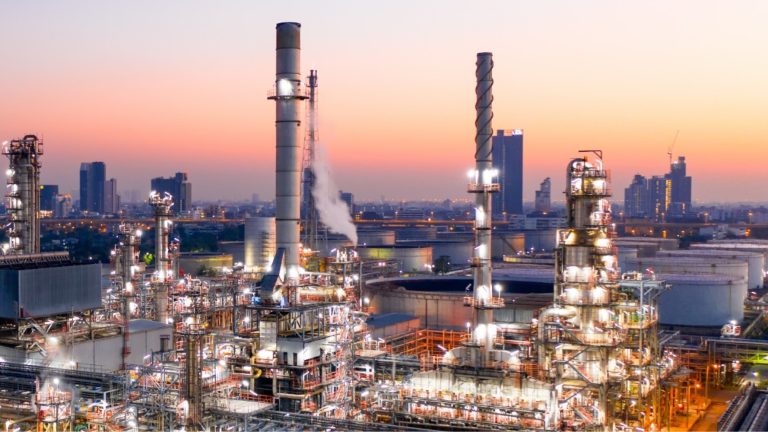Due to the COVID pandemic and Russia-Ukraine conflict, oil and gas industry has seen increased supply chain disruptions and price volatility.
But despite these two big events oil and gas companies have posted record profits in 2022. Energy companies are looking forward to ramp up their investments in clean energy and newer technology this year.
Exxon Mobil will spend about $3.4 billion annually on green energy over the next 5 years. Similarly, Chevron Crop is going to invest $2 billion on alternative energy this year.
The ongoing price strength and capital discipline of oil and gas companies can help the industry to sail through tumultuous 2023.
Most of the energy companies are able to balance their priorities to shareholders and at the same time invest in low carbon businesses.
Recently Deloitte conducted a survey by interviewing top executives globally across five different industry verticals – exploration and production, oilfield services, midstream, petroleum refining and marketing. Based on the survey we have identified 5 important trends for the year 2023.
Also read: Anushree Singh joins Avery Dennison as HR Director-EMEA, Apparel Solutions
Here are they …
Upstream Industry’s Investment Discipline Likely to Continue for Coming Years
With the rising fuel price in Indiaand the world, upstream energy companies are able to generate huge profits every single year. In the year 2022 the global upstream companies generated free cash flows of around $1.4 trillion.
However, despite huge profits, the dilemma for these companies is if they will continue to pay back their shareholders or increase their hydrocarbon investment rate.
The reality is most of the oil and gascompanies still prefer to pay back their shareholders.
According to the Deloitte survey 50% companies favored capital discipline to strengthen their balance sheets through debt repayments and offering cash back to their shareholders. The remaining 50% believed scalable and economical low carbon use cases are necessary to accelerate the clean energy transition.
Downstream Industry like Refining are Rethinking their Investment Strategy
On the other hand downstream oil and gas companies especially refineries are rethinking their investment strategy in the face of dwindling crude oil demand, changing end use patterns and rising oil price volatility.
Downstream energy companies want refinery modification for low emission fuels like renewable diesel and hydrogen to maintain high growth rate.
Because of COVID lockdown in China oil demand is weakening and oil price volatility is increasing. This is making refineries to rethink their investment strategies to include
a) Altering product yields geared towards high margin petroleum and chemical end products.
b) Repurposing existing infrastructure for clean energy alternatives like renewable diesel and hydrogen.
Refinery modification for low emission fuels is very crucial for maintaining growth for next few years.
Green Energy is Transforming Oil and Gas Companies
Oil and gas companies are under immense pressure from their governments and environmental organizations to reduce carbon emissions. In fact, energy companies are seen as a main culprit for the green house gas.
Moreover, new policies push in USA and Europe are putting a price on carbon emissions. In Europe, over $750 billion added by new energy policies. USA has enacted Infrastructure Investment and Jobs Act, and Inflation Reduction Act.
This is forcing energy companies to adapt their business model and diversify portfolios. Companies are expecting changes in demand for their end products as the alternatives become more viable in the future.
Hence clean energy is changing the nature of energy sector.
Natural Gas like LNG is the Future
Natural gas is considered as a sustainable alternative by European policy makers. On the other hand in USA, the inflation reduction Act offers grants to oil and gas companies to reduce methane.
The energy policy has changed from phasing out natural gas to reducing emissions from natural gas.
Because of this, the demand for low carbon fuel like natural gas has increased in European and North American Markets.
Natural gas producing countries are increasing their output. Their storage capacity is going to increase by 20%. Highest numbers of LNG vessels have been ordered globally during the last seven month. Growth of natural gas is expected to gain momentum in 2023.
Low-Carbon Assets
Despite high oil prices and profitability, mergers and acquisitions from oil and gas companies fell by 27% year after year. This trend was due to slowdown in world economy and uncertainty surrounding the industry.
This has impacted the buying strategies and decision making of these companies. Moreover, because of the industry’s capital discipline (we talked in trend 1) merger and acquisitions are going to remain subdued in 2023.
Nevertheless, there will be an increased number of investments in new low carbon assets. Stable and high energy prices are necessary to sustain the merger and acquisitions activity next year.
These were 5 trends to persist in oil and gas industries in 2023. Overall the industry is going to remain resilient amid global uncertainty like trade restrictions and economic slowdown.
Stay connected with us on social media platform for instant update click here to join our LinkedIn, Twitter & Facebook





















Add comment